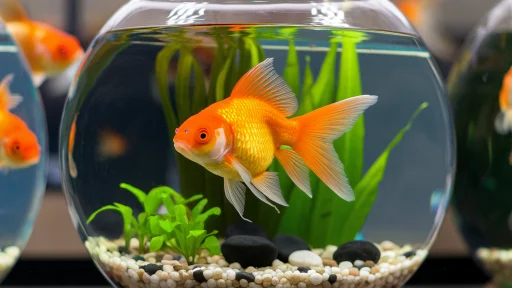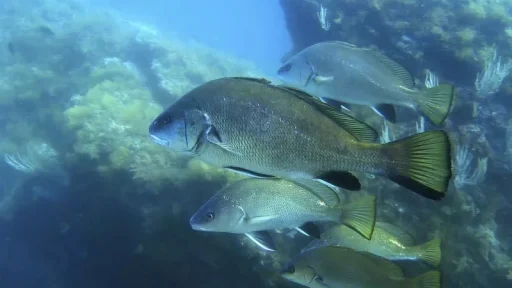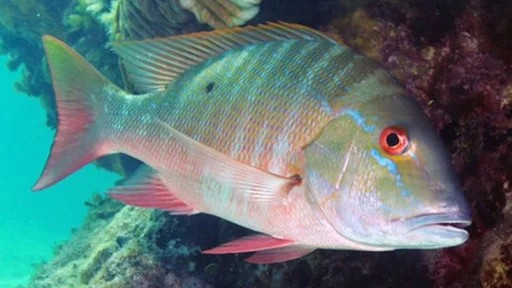I’ve always been fascinated by betta fish species. These amazing creatures, also known as Siamese fighting fish, show incredible diversity. They come in many colors, patterns, and tail types.
From the Blue Dragon’s ethereal blues to the Red Copper’s fiery hues, each betta is unique. They are a true marvel of nature.
In this guide, we’ll dive into the world of betta fish. We’ll look at different species that have won the hearts of many. Whether you’re new to betta fish or already a fan, get ready to see their stunning tails, colors, and patterns.
Betta Fish Overview
Habitat and Characteristics
Betta fish, also known as Siamese fighting fish, are famous for their bright colors and unique fins. They come from Southeast Asia’s shallow waters, where they live among lots of plants. Their special labyrinth organ lets them breathe air, helping them survive in low-oxygen betta fish habitat.
Betta fish are known for their betta fish behavior, especially in males who can be very aggressive. Yet, they can also connect with their owners, showing great intelligence. As betta fish are meat-eaters, their diet in the wild includes insects and larvae. In captivity, they can eat various foods like fish flakes, pellets, and live foods.
The betta fish characteristics that make them popular include their bright colors, detailed fins, and engaging personalities. Their ability to live in low-oxygen environments makes them a great choice for many aquarium fans.
Classifying Betta Fish Species

The world of betta fish is full of color and diversity. There are many betta fish species, each with its own special traits. Knowing about betta fish taxonomy and betta fish genus is key for fans.
Betta Fish Tail Types
One way to sort betta fish is by their tail types. The most common shapes are:
- Crowntail: Distinctive spikes on the fin rays
- Comb Tail: Variation of the crowntail with additional branching
- Delta Tail: Symmetrical, fan-like tail reaching up to 180 degrees
- Double Tail: Two separate tails connected directly to the body
- Elephant Ear: Enlarged pectoral fins, often paired with various tail types
- Halfmoon: Clean ‘D’ shape that can spread up to 180 degrees
- Half Sun: Halfmoon with an additional, smaller tail lobe
- Plakat: Shorter fins and tails compared to other bettas
- Rose Tail: Excessive branching on the fin rays, creating a rose petal-like appearance
- Roundtail: Symmetrical, rounded tail shape
- Spade Tail: Distinctive spade-like shape
Other less common types include veiltail, over halfmoon/super delta, and feather tail.
| Tail Type | Care Level | Temperament | Life Expectancy | Size |
|---|---|---|---|---|
| Veiltail | Moderate | Peaceful, could be aggressive sometimes | 2–4 years | 1.5–2 inches |
| Crowntail | Moderate | Aggressive | 2–3 years | 3 inches |
| Combtail | Difficult | Aggressive | 3 years | 3 inches |
| Double Tail | Moderate | Aggressive | 2-3 years | 2-3 inches |
| Spadetail | Difficult | Peaceful | 2-4 years | 1.5-2 inches |
| Halfmoon | Beginner | Active | 2-4 years | 1-3 inches |
| Over Halfmoon | Difficult | Highly Aggressive | 2 years | 1.5-3 inches |
| Delta | Moderate | Aggressive | 2-4 years | 1.5-3 inches |
| Super Delta | Easy | Peaceful | 2-4 years | 1-2.5 inches |
Betta Fish Tail Varieties
Betta fish are known for their many tail shapes and varieties. Each tail type has its own look and swimming style. Let’s look at some of the most interesting betta fish tail varieties:
- The crowntail betta has a regal, crown-like tail. The fin rays go beyond the membrane, making it spiky and dramatic.
- The comb tail is similar but less extended than the crowntail. It has a subtle ruffled effect.
- The delta tail is triangular, getting narrower towards the body. It looks sleek and elegant.
- The double tail betta has two distinct tails. This gives it a bold and unique look.
- The elephant ear betta has pectoral fins like elephant ears. This adds a unique and captivating element to its look.
Other notable betta fish tail varieties include the halfmoon betta and the half sun betta. The plakat betta has short fins like wild-type bettas. The rose tail betta has a tail like a rose. Lastly, the roundtail betta has a round tail fin, making it compact and streamlined.
These betta fish tail types and betta fish fin shapes let enthusiasts find the perfect fit for their aquariums. Betta fish are versatile and captivating, making them a great addition to any home.
Vibrant Colors of Betta Fish
Betta fish are known for their stunning colors. They range from fiery reds and oranges to cool greens and purples. Each betta has its own unique color, making them truly special.
Common colors include solid reds, oranges, yellows, greens, blues, purples, blacks, whites, and pinks. But there’s more. Through selective breeding, we’ve seen colors like mustard gas and cellophane bettas. These add to the wide range of hues and patterns available.
Some betta fish have bi-colored or intricate patterns. Think of the butterfly, cambodian, and marble betta varieties. These fish are like living art, showing off the amazing diversity of betta fish.
Whether you love bold colors or softer, more shimmering ones, betta fish colors will amaze you. Finding your favorite colors is part of the fun of having these beautiful fish as pets.
Betta Fish Color Patterns
Betta fish are known for their bright colors and unique patterns. They can have bi-colored bodies or stunning butterfly fins. Let’s dive into the world of betta fish color patterns and find out what makes them special.
Unique Markings
Betta fish have more than just solid colors. The cambodian betta has a pale body and colorful fins. The dragon betta has a deep base color and shimmering scales, making it look like royalty.
The marble betta has a beautiful marbled look. The multicolored betta can have up to three colors. Other patterns like dalmatian, full mask, koi, and grizzle add to their charm.
| Pattern | Description |
|---|---|
| Bi-Colored | The body and fins are different colors, creating a striking contrast. |
| Butterfly | The fins have distinct bands of color, resembling a butterfly’s wings. |
| Cambodian | The body is pale or almost colorless, with a solid-colored fin. |
| Dragon | A rich, strong base color with iridescent scales that resemble a dragon’s armor. |
| Marble | A unique marbled pattern of colors across the body and fins. |
| Multicolored | Three or more distinct colors that don’t fit into any other pattern category. |
Whether you love the betta fish color patterns or their unique markings, they are truly amazing. Explore the betta species and be amazed by their colors and designs.
Caring for Betta Fish Species
To keep betta fish healthy, you need to care for them right. A 5-gallon tank is the minimum for one betta, but bigger is better for more. The tank should be near a power source but not in direct sunlight or cold spots. A strong filter that moves the water a few times an hour is best.
Betta fish love warm water, between 74-82°F. They also need 14-16 hours of light each day. Since they’re meat-eaters, feed them a mix of fish flakes, pellets, and live foods.
It’s key to check the water often for ammonia, nitrite, nitrate, and pH levels. Change the water every 2-4 weeks with a conditioner to keep it clean.
Betta Fish Tank Requirements
- Minimum tank size: 5 gallons
- Ideal water temperature: 74-82°F
- Appropriate lighting: 14-16 hours per day
- Powerful filter with low water flow
- Regular water testing and changes
- Varied diet of fish flakes, pellets, freeze-dried, frozen, and live foods
With the right care, tank setup, and food, your betta fish will be happy and healthy for a long time.
Betta Fish Species in the Wild

In Southeast Asia, betta fish live in shallow, slow-moving waters with lots of plants. This setup helps them get enough oxygen and food, like insects and larvae. But, pollution and habitat loss threaten their numbers, making them vulnerable.
It’s key to protect betta fish’s homes to save them. By keeping their betta fish natural habitat, betta fish natural environment, and betta fish wild populations safe, we help these betta fish wild species survive. This way, we keep the ecosystems they live in balanced.
The wild betta fish show how adaptable and strong they are. With their bright colors and special behaviors, they are a wonder to see. By defending their betta fish natural habitat, we make sure they stay a part of their ecosystems.
Breeding and Reproduction of Betta Fish Species
Betta fish reproduction is a fascinating process. It shows the complex mating behaviors and life cycle of these colorful fish. The male betta fish must be over 9 months old to breed. He then builds a bubble nest using plants and his saliva, waiting for a female.
The female betta will release 10 to 40 eggs when ready. But, she might eat the eggs. The male must protect the eggs by chasing the female away.
After 24-36 hours, the fry hatch. They stay in the bubble nest for 2-3 days, eating their yolk sacs. When they start swimming, the male’s job is done. The fry need food, like baby brine shrimp, from 8 days old.
Betta fish live 2-5 years. With good care, they can live longer. Knowing how they breed helps us appreciate their beauty and life cycle.
| Breeding Requirement | Details |
|---|---|
| Male Betta Fish Maturity | Older than 9 months |
| Ideal Male Betta Size | Larger than the female |
| Betta Fry Feeding | Baby brine shrimp starting at 8 days old |
| Water Changes for Betta Fry | Daily at a rate of 10-15% |
| Breeding Tank Size | 10 Gallons (38 Liters) |
| Fry Rearing Tank Size | 30+ Gallons (114+ Liters) |
| Conditioning Time for Breeding Pair | 10 days |
| Ideal Breeding Tank Temperature | 80 degrees Fahrenheit (26.7 degrees Celsius) |
Conclusion
Betta fish, also known as Siamese fighting fish, are found in Southeast Asia. They have many tail types, colors, and patterns. This makes them a favorite among aquarium lovers everywhere.
From the majestic crowntail to the vibrant red betta, they are truly stunning. Each betta fish species brings its own beauty to the underwater world.
Betta fish are easy to care for, making them great for both new and experienced fish keepers. They have unique personalities that make them stand out. Knowing about the different betta fish species helps people choose the right one for their tank.
Thailand is key in the global betta fish market. They breed and export betta fish for aquariums around the world. Groups like the International Betta Congress help promote betta fish keeping and breeding.
FAQs
What are the different types of betta fish species? Betta fish, also known as Siamese fighting fish, have many tail types, colors, and patterns. You can find crowntail, comb tail, delta tail, and more. They come in colors like red, orange, and green, with patterns like bi-colored and marble.
What are the habitat and characteristics of betta fish? Betta fish are from Southeast Asia, living in shallow waters. They have a special organ to breathe air. They are aggressive but can recognize and interact with their owners. They mainly eat insects and insect larvae.
How are betta fish species classified? Betta fish are classified by their tail types, colors, and patterns. They have tails like crowntail and comb tail. They come in many colors and patterns, such as bi-colored and butterfly.
What are the different tail varieties of betta fish? Betta fish have many tail shapes, like crowntail and comb tail. Each tail type looks different and has its own characteristics.
What are the vibrant color varieties of betta fish? Betta fish come in bright colors like red and yellow. They also have unique colors like mustard gas and cellophane betta, thanks to selective breeding.
What are the different color patterns found in betta fish? Betta fish have unique patterns like bi-colored and butterfly. They also have patterns like dalmatian and full mask.
How should betta fish be cared for? Betta fish need proper care to stay healthy. They need a 5-gallon tank with a strong filter and water between 74-82°F. Feed them a mix of fish flakes, pellets, and live foods.
What is the natural habitat of betta fish? Betta fish live in shallow waters in Southeast Asia. They have a labyrinth organ to breathe air. They thrive in waters with plants and plenty of insects to eat.
How do betta fish reproduce? Betta fish reproduction is complex. The male wraps his body around the female in a “nuptial embrace” during spawning. The female lays 10-40 eggs, and the male chases her away to protect the eggs. The eggs incubate for 24-36 hours, and the fry stay in the nest for 2-3 days.
Read More:
Dorado Fish Decoded: Unveiling the Secrets of This Ocean Acrobat
Grouper Fish: The Giant of the Reef and Its Crucial Ecological Role
TriggerFish: The Ocean’s Living Locks and How They Got Their Name
Colonel Fish: Unraveling the Secrets of This Unique Marine Species





